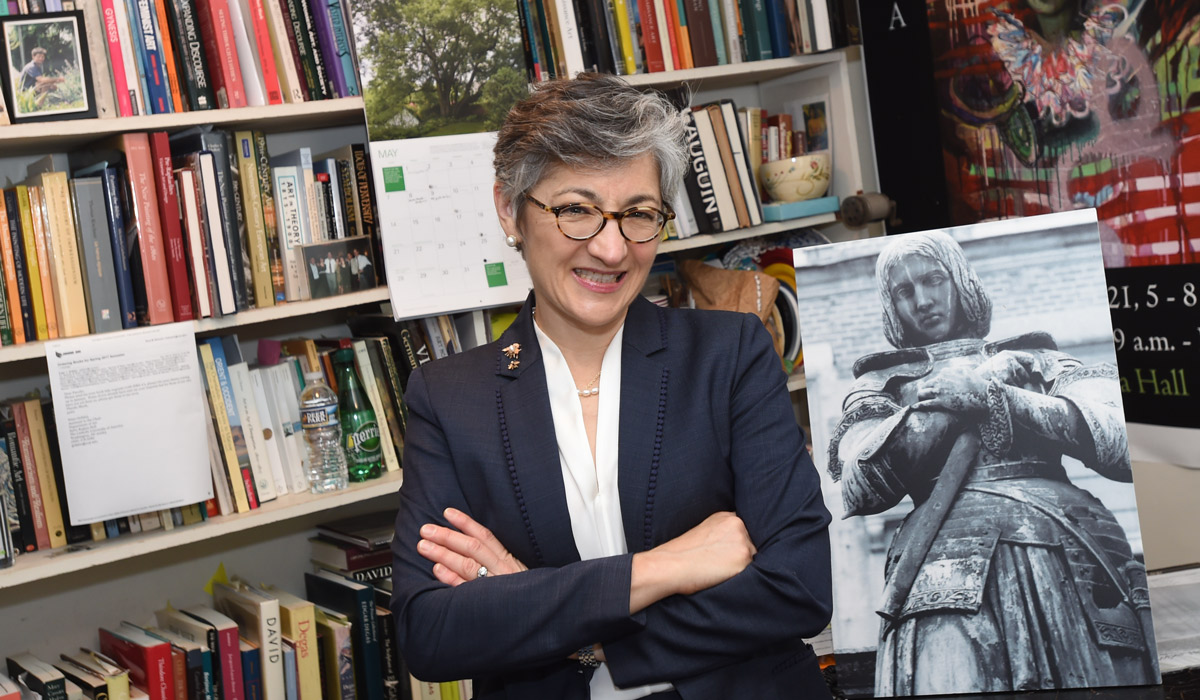

As an undergraduate, Nora Heimann came face-to-face with the transformative power of art. She was nearly ready to graduate as a studio artist and as a pre-med major when she took an art history course and fell in love with it.
“Art is the way in which we express our deepest and most profound thoughts, beliefs, feelings, and experiences.”
“From the time I was a little girl, I loved making art, but I wanted to be a doctor because I was
also very interested in the science of the human condition and its improvement. Above all, I wanted to work with people in a meaningful and helpful way,” says Heimann, chair of the University’s art department.
Exploring her new-found passion for art history brought her to the realization that through scholarly research, she could study material and spiritual aspects of human experience across time; and through teaching, mentoring, and advising, she could help students grow and develop.
“Art is the way in which we express our deepest and most profound thoughts, beliefs, feelings, and experiences,” she recently mused. “Teaching students how to see and understand art is, in part, about helping them to be more visually and verbally literate — training them to observe more acutely, analyze with greater sophistication, and communicate in a more articulate manner. But it is also, in an equally important manner, about fostering empathy and compassion, seeing in the faces of others, and in the man-made and God-given world around us, both the workings of the human heart, hand, and mind, and the miraculous spark of the divine."
Heimann notes that she wants every one of her students “to achieve their own best potential.” To harness that potential, she offers each of them as much personal attention as she can. This means that her office hours often stretch deep into the night, especially towards the middle and end of each semester when students regularly ask for help with refining their paper-topics, advancing their research, revising drafts of final papers, and improving their resumes, cover letters, and application essays. This careful attention has assisted Heimann’s students in
improving their academic and professional skills. It has also helped them land coveted internships with the Library of Congress, the National Gallery of Art, the Smithsonian Institution, and other museums and galleries in the D.C. area and beyond; and it has yielded admission to top graduate schools and scholarship funding.
“Many of our students are Catholic and/or the product of a Catholic education, so they have been raised with a sense of social responsibility,” says Heimann. “Part of what we as a university look to instill in them — the courage to live a virtuous life and the determination to be of real service to society — is, in many cases, already present.”
Heimann strives to achieve the same goals in her own life. Recently, this inspired her to become part of a new pilot program that serves people with dementia and their caregivers, called “Just Us at the National Gallery of Art.” This program provides an interactive, discussion-based museum experience as a way of creatively engaging those with dementia, while also offering support and respite to their caregivers.
“Many of the participants in ‘Just Us’ face challenges of memory loss and advancing verbal and often also non-verbal limitations; and many of their caregivers struggle with feelings of social isolation, exhaustion, and burnout,” says Heimann. “The National Gallery provides a tranquil setting for appreciating inspiring and engaging objects in a cognitively stimulating way. We invite participants to look closely at beautiful art, and to share their ideas in discussion in a supportive and stimulating environment in which everyone is welcome to communicate their thoughts and feelings in their own unique way. I have seen how evocative and soulful works can elicit profound thoughts and even long-forgotten memories. Being a part of this program for the last seven month has taught me about courage, patience, and fortitude. It has also abundantly affirmed how inspiring and nourishing art can be for us all.”